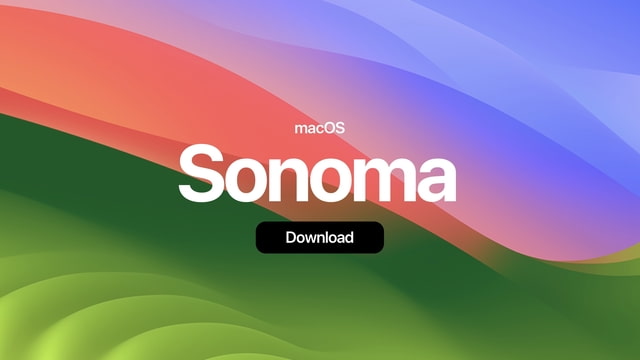Freelancing Platforms: Top 5 Websites
Freelancing Platforms
In the digital age, the concept of a traditional 9-to-5 job is rapidly evolving. More people are embracing the flexibility and independence that comes with online work. Whether you’re a student, stay-at-home parent, or someone looking to transition out of the corporate grind, freelancing platforms offer a gateway into the growing gig economy. In this comprehensive guide, we’ll explore the top 5 freelancing platforms where you can start earning online and discover remote jobs that align with your skills and interests.
Introduction to Freelancing Platforms
Freelancing platforms are digital marketplaces that connect freelancers with clients seeking specific services. These platforms streamline the hiring process, provide secure payment systems, and offer a variety of freelance opportunities across different industries. As the gig economy continues to flourish, more professionals are turning to these platforms to find consistent online work and build sustainable careers.
Why Choose Freelancing Platforms?
Freelancing platforms are ideal for beginners and seasoned professionals alike. They offer:
- Access to a global client base
- Opportunities to work on diverse projects
- Secure and timely payments
- Flexibility to choose your own schedule and workload
- A chance to build a personal brand and portfolio
Whether you’re a graphic designer, content writer, software developer, or virtual assistant, freelancing platforms can provide a steady stream of remote jobs and freelance opportunities.
1. Upwork
Upwork is one of the most well-established freelancing platforms in the world. With millions of users and job postings each year, it provides ample freelance opportunities for individuals across various fields.
Key Features:
- User-friendly interface
- Wide range of job categories including writing, development, marketing, and design
- Secure payment through hourly or fixed-price contracts
- Feedback and rating systems to build credibility
Upwork is a great starting point for anyone new to online work. It allows freelancers to bid on jobs, communicate directly with clients, and manage contracts easily.
Tips for Success on Upwork:
- Create a professional profile with a strong portfolio
- Write personalized proposals for each job
- Start with lower rates to build reviews
- Be responsive and meet deadlines
2. Fiverr
Fiverr is known for its gig-based structure, where freelancers create service listings (gigs) starting at $5. It’s perfect for those who want to offer specific skills in a package format.
Key Features:
- Gig-based model allows full control over services and pricing
- Ideal for creative professionals: designers, writers, video editors, etc.
- Option to offer add-ons for more income
- Built-in marketing and analytics tools
Fiverr is one of the most flexible freelancing platforms available. It thrives on creativity and uniqueness, which makes it great for remote jobs in niche areas.
Tips for Success on Fiverr:
- Use SEO-friendly gig titles and descriptions
- Invest in high-quality visuals and videos
- Deliver exceptional work to gain positive reviews
- Promote your gigs on social media
3. Freelancer.com
Freelancer.com is another major player in the freelancing space, with millions of users worldwide. It offers a broad range of freelance opportunities and is especially useful for long-term online work arrangements.
Key Features:
- Extensive job categories and industries
- Competitive bidding system
- Time tracking and milestone payments
- Contests to win projects based on skill
Freelancer.com is great for professionals who want to grow their remote jobs portfolio and network with international clients.
Tips for Success on Freelancer.com:
- Be strategic with your bids and pricing
- Participate in contests to showcase talent
- Build a reputation through consistent delivery
- Stay active and respond promptly to client messages
4. Toptal
Toptal is a premium freelancing platform that connects top freelancers with elite clients. It’s highly selective, accepting only the top 3% of applicants. If you have expertise in software development, finance, or design, Toptal is a great choice.
Key Features:
- Rigorous screening process ensures high-quality freelancers
- High-paying, long-term projects
- Access to elite companies and startups
- No bidding — matched directly with clients
Toptal is one of the most exclusive freelancing platforms, perfect for professionals seeking high-level freelance opportunities.
Tips for Success on Toptal:
- Prepare thoroughly for the screening process
- Highlight your experience and certifications
- Be open to feedback and continuous improvement
- Maintain professionalism in all client interactions
5. PeoplePerHour
PeoplePerHour caters to freelancers in design, development, writing, and marketing. It’s user-friendly and focuses on connecting local freelancers with clients, although international work is also common.
Key Features:
- Hourlies and project-based pricing
- Built-in invoicing and payment system
- AI-based matching for relevant job suggestions
- Community features for support and collaboration
PeoplePerHour is one of the most accessible freelancing platforms for those starting out in the gig economy.
Tips for Success on PeoplePerHour:
- Create compelling proposals and profiles
- Leverage client feedback to build trust
- Be proactive in applying to posted jobs
- Specialize in a niche for better visibility
How to Choose the Right Freelancing Platform
Choosing the right freelancing platform depends on your skills, experience, and career goals. Consider the following factors:
- Niche relevance
- Payment structure and fees
- Client base and job availability
- Platform support and resources
- Growth and upskilling opportunities
Experiment with a few freelancing platforms to see which one suits your needs best. Many freelancers eventually establish a presence on multiple platforms to maximize their exposure to freelance opportunities and remote jobs.
Building a Successful Freelancing Career
Once you’ve selected your platform, the journey to success in online work begins. Here are some essential tips to thrive in the gig economy:
1. Build a Strong Profile
Your profile is your online resume. Include:
- A professional photo
- Detailed description of your skills and experience
- A portfolio of past work
- Certifications and client testimonials
2. Focus on Client Relationships
Happy clients mean repeat work and referrals. Always:
- Communicate clearly and promptly
- Deliver work on time
- Be open to revisions and feedback
- Show appreciation and professionalism
3. Upskill and Adapt
The freelance world is dynamic. Stay competitive by:
- Learning new tools and technologies
- Attending webinars and workshops
- Earning certifications
- Adapting to industry trends
4. Manage Finances Wisely
Freelancing income can fluctuate. Be prepared by:
- Setting aside savings for slow months
- Investing in tools and marketing
- Tracking expenses and invoices
- Planning for taxes and insurance
Final Thoughts
Freelancing platforms have transformed the way people work and earn. With a stable internet connection and a marketable skill, anyone can access freelance opportunities and remote jobs from virtually anywhere. As the gig economy expands, these platforms will continue to evolve, offering more opportunities and resources for freelancers worldwide.
Whether you’re just starting or looking to scale your freelance business, the key is to stay consistent, deliver quality work, and keep learning. Embrace the freedom of online work and make the most of what freelancing platforms have to offer.
By choosing the right freelancing platforms, you open doors to endless possibilities in the digital world. Start today and take control of your career path in the thriving gig economy.
_Piotr_Adamowicz_Alamy.jpg?width=1280&auto=webp&quality=80&disable=upscale#)








































































![Apple Officially Releases macOS Sequoia 15.5 [Download]](https://www.iclarified.com/images/news/97308/97308/97308-640.jpg)



















































































































_designer491_Alamy.jpg?width=1280&auto=webp&quality=80&disable=upscale#)






















































































































































































































































































![Ditching a Microsoft Job to Enter Startup Purgatory with Lonewolf Engineer Sam Crombie [Podcast #171]](https://cdn.hashnode.com/res/hashnode/image/upload/v1746753508177/0cd57f66-fdb0-4972-b285-1443a7db39fc.png?#)




























































































